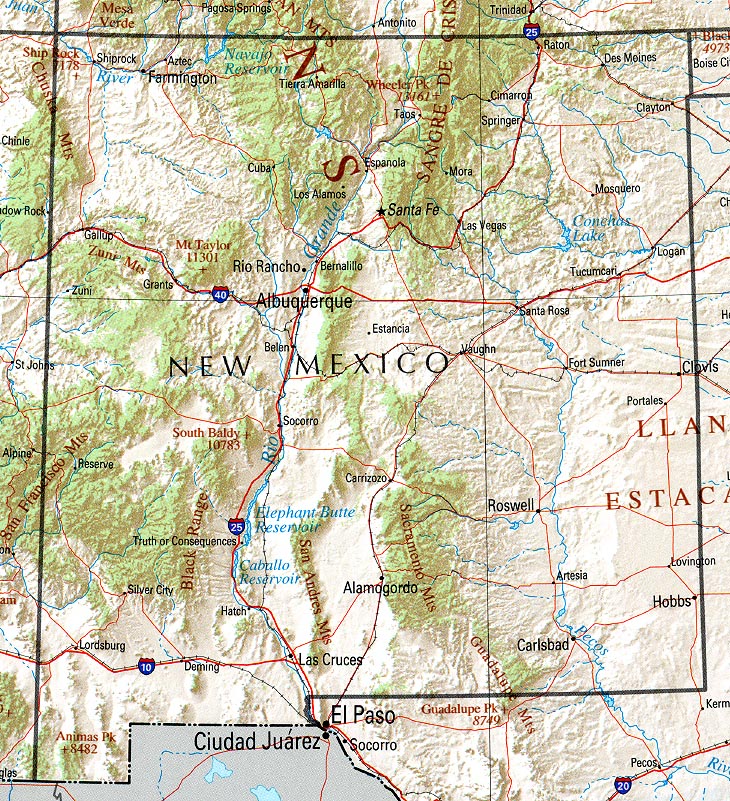Silver City is in a valley that once served as an Apache campsite. With the arrival of the Spaniards, the area became known for its copper mining. The founding of the town by the Americans occurred shortly after the discovery of silver ore deposits at Chloride Flat, on the hill just west of the farm of Captain John M. Bullard and his brother James, hence the name of the town. It is the home of Western New Mexico University (which has one of the most extensive collections of Mimbres pottery in the state.)
The Mimbres Mogollon Indians (A.D. 200–A.D. 1140/50) once lived in the area, along with other prehistoric groups, including the Salados. The Mongollon Indians are best know for their beautiful and interesting pottery. It was a black and white pottery which depicted various people and animals. It is very artistic and many of the pueblos were vandalized by "pot hunters." Many of the bowls were found with a "kill hole" over the faces of the dead who were buried in the various pueblos in the region.
Some of the Mimbres people lived in the Gila Mountains much of which has been designated as the Gila Wilderness by the federal government. In the Gila Cliff Dwellings you can see evidence of their occupation.
Not far north off of USHwy-180 on NMHwy-174 is the Catwalk bridge system. In the 1930's the Civilian Conservation Corp. rebuilt it. The original was built after the discovery of gold and silver in the Mogollon Mountains above Whitewater Canyon. In 1893, the small town of Graham (also known as Whitewater) grew around a mill. The mill only lasted about 10 years. The bridge system was washed away during a huge flooding event after the 2012 Whitewater-Baldy Fire , but has been rebuit for tourist use.
Gallery
 |
|---|
| The Catwalk |
In the Gila Mountains
 |
||
|---|---|---|
| Mimbres site | Gila Wilderness | Kokopelli rock art |
